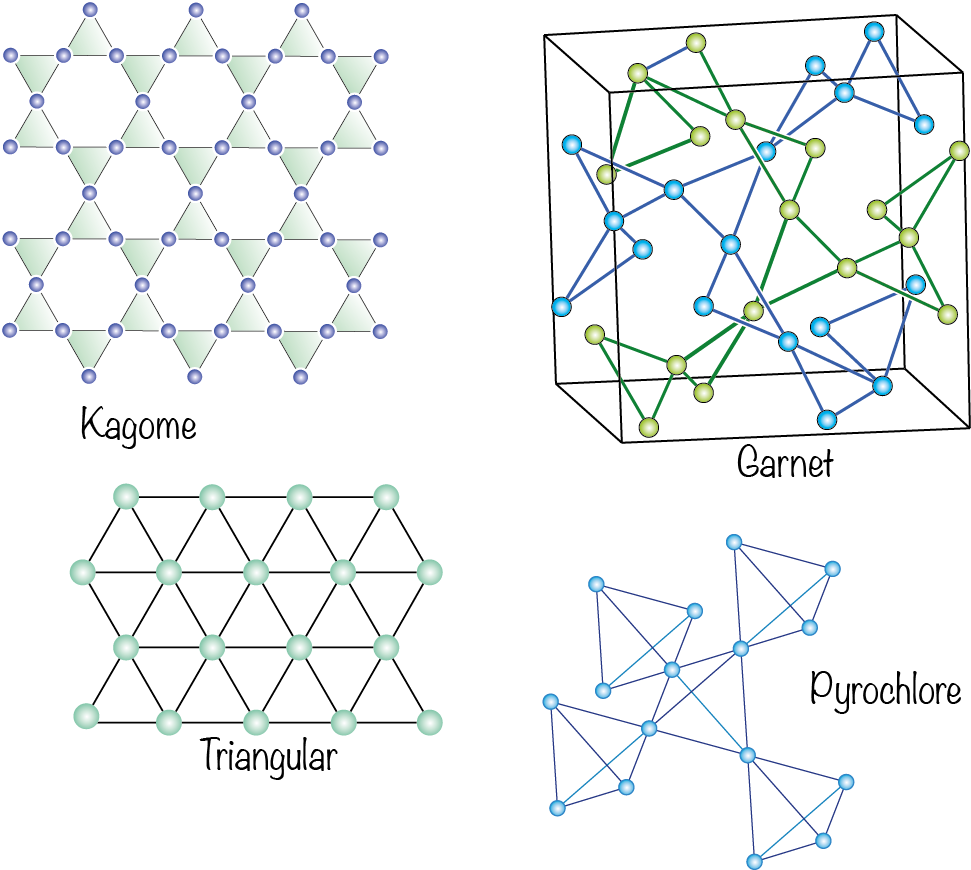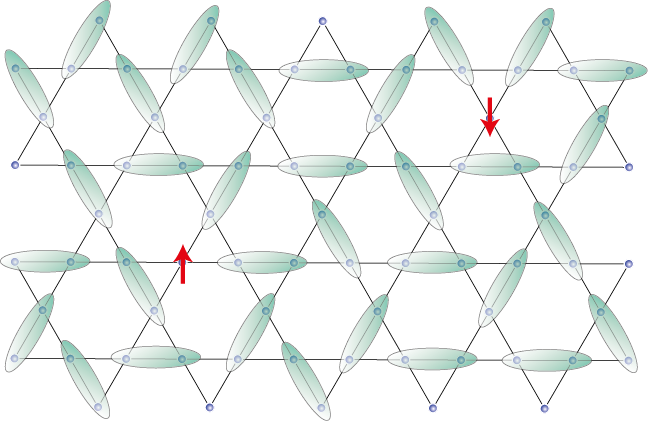Highly Frustrated Magnetism

Fig. 1: A collection of geometrically frustrated lattices in 2- and 3-dimensions.
Magnetic frustration is a competition between the various interactions between spins in a material and can lead to the stabilization of exotic and unconventional magnetic ground states [1]. One important way to achieve frustration is with the geometry of the lattice, often using lattices that consist of triangular motifs (see Fig. 1). To put it simply, two antiferromagnetic interactions on a triangle of spins can be satisfied, but the third remains frustrated. Alternatively, in 3-dimensions, tetrahedra, such as in the pyrochlore lattice, can also provide a source of geometrical frustration.
More than just the ferromagnets you find on your fridge door where all of the spins align in the same direction, frustrated magnets have the potential to exhibit very unusual spin configurations. For example, in the classical spin systems known as spin ice (like Ho2Ti2O7), the spins are highly frustrated and are unable to find an ordered state down to extremely low temperatures, maintaining disordered spins and macroscopic residual entropy [2]. This behavior is analogous to that of the proton bonds in real ice, hence the name “spin ice”. The elementary spin excitations out of this disordered ground state can be described as magnetic monopoles which gives rise to many interesting magnetic properties of these materials [3].
Combining disorder with frustration can give rise to what is known as a spin glass. Similar to the amorphous, frozen structure of silicate glasses, the ground state of a spin glass is one where the spins are randomly oriented but frozen in place [4]. A number of exotic but ordered states can also result in frustrated magnets, including some that manifest multiferroic properties, an interesting and potentially applicable interplay of magnetism with electric polarization or other order parameters [5].

Fig. 2: An artistic impression of a QSL ground state with a pair of deconfined spinons. A real QSL would consist of a superposition of many such singlet configurations.
Frustrated magnets that have a low spin number, for example S = 1/2, incorporate significant quantum fluctuations. In this case, the most exciting possibility is known as a quantum spin liquid (QSL), a long-range quantum entangled ground state with no broken symmetry that can be thought of as fluctuating valence bonds or singlets [6] as depicted on the left. QSLs are expected to exhibit exotic, fractional spin excitations, for instance S=1/2 spinons. To see how strange these excitations are, try to imagine flipping spins in a material such that you change the total spin number by 1/2 instead of an integer value. Several materials now exist as strong candidates for QSL behaviour, but careful studies are needed to confirm that possibility.
Suggested references: